Here is what you discover when you start reading the latest ode to Jon Hamm from Details magazine:
- Hamm swears at bikers.
- While wearing madras shorts and a baseball cap.
- Because they impede him from going 140 in his borrowed fancy car, a silver Mercedes that is not yet available for purchase by the public
- While avoiding parking tickets, apparently by the sheer force of Hamm's manly will
- Before returning to the Malibu beach house he's borrowing for the weekend with the girlfriend who likes all the same things he does, and their German shepherd mix.
Let me stop right there.
In The Mommy Myth, Susan J. Douglas spends a chapter outlining the weird formality of the celebrity mom profile. They read identically: the celebrity mom dotes obsessively on her kids, and even though she's hard-working and financially independent and has a very visible career, she still thinks her children are her greatest achievement as a woman and as a human being. It's as though we need to be reassured that when given enough power and money (same thing, really), a woman will 'naturally' choose to become a wife and mother (but most importantly a mother).
With Jon Hamm (and George Clooney, and that one time in Vanity Fair with Shia LaBeouf until he became a target for mockery), we get the men's version: the retro-dude profile. Instead of having adorable children, he is "piecing together his résumé, quietly building a career and a life." Instead of decorating a home, he is "never in danger of taking the easy way." His words have "the weight of a benediction" because his is the voice of authority. But of course, he is also Everyman: "Not self-consciously handsome. Not a dick. A normal guy . . ."
Here is the difference between the celebrity mom profile and the Hamm piece: the former is all about the actress' personal life, her children and her home and her feelings. The latter is about his career, his talent, and his plans for the future. Nevertheless, both the celebrity mom's maternal warmth and Jon Hamm's self-assurance are supposed to be 'natural,' and effortless. In reality, both gender poses require a great deal of time and energy. Yet the reader is encouraged by the celebrity profile to view this effortlessness as the reason for the celebrity's prominence, the base of their fame and fortune. For example, this sentence from the Hamm profile:
Real men, you see, are tortured -- Don Draper by his false identity, Jon Hamm by the loss of both his parents and his knowledge that his chosen industry is fickle, that he will have to keep on his toes and work hard. Good thing that hard work is an acceptably masculine activity.
Real men are also leaders, particularly of women:
"One of the greatest pleasures of the job," Weiner says, "has been to see Jon create the character of Don Draper. He's smart, deep, and a natural leader. I can't imagine making the show without him."
It is ambiguous whether "smart, deep, and a natural leader" refers to Jon or his character. And there's more:
Elisabeth Moss, who plays Peggy, says the whole cast considers Hamm "the leader of our little gang. We do defer to him. If there's something that we need to fix, we go to Jon.
"It's funny," she adds. "There definitely are a lot of similarities between how Jon and I get along and the relationship between Don and Peggy. But Jon doesn't yell at me as much—thank God. That would be a bit rough."
That there is a difference between Jon and Don -- oh god, are the names really that similar? -- the author acknowledges, but only just: "It occurs to me that this is why Weiner keeps journalists off his sets: so nobody will realize that the reason his cast is so good is that the 'actors' are actually split-personality cases who've fully inhabited their roles."
Even while the author takes care to note Hamm's versatility as both a comedic and dramatic talent -- coupled with another gushing quote from a woman, Sarah Silverman this time -- he is eliding the distinction between Jon Hamm and the character he has helped create:
Hamm tends to talk about the collaborative nature, the teamwork, of showing up and being a part of something. "This isn't a very solitary experience," he says. "You can't just go into a room and act by yourself. You need an audience to play off of, you need someone to write the material." On cue, Elisabeth Moss, in full Peggy regalia, joins us on the folding chairs. I ask her if there's a Don Draper School of Acting.
"He doesn't say too much," Elisabeth/Peggy says sheepishly.
"Not since you stopped fucking it up and got it right," Jon/Don says, and they both crack up.
Still laughing, Hamm gets up. As he ambles toward the set, the actors' reserved parking spots come into view. The SLS, its wings tucked primly away, is shining like some golden trophy in the sun.
Despite the majesty rays there, the article goes out of its way to note that Jon Hamm has not yet achieved instant-recognition celebrity status: the folks at the burger joint he and the author eat at fail to make a fuss over his presence, which leads the author to conclude that Hamm has not been recognized. (Though if Hamm eats there frequently, it might be simple politeness on the part of the employees.) The author connects the two personalities of actor and character in such a way that Jon Hamm is the Clark Kent to Don Draper's Superman. Only, instead of leaping a tall building, he comes out of the phone booth and shoves a check into his mistress' cleavage.
The article's reader is encouraged to think of Jon and Don as two aspects of a single personality. It is Jon Hamm who has brought Don Draper out of the sixties to save us.
Save us from what, though? From "casual Fridays and Twitter"? Really? The messianic tone of the article is all the more unsettling because the threat Jon/Don will save us from is never explicitly named. Though we can guess.
Jon Hamm does seem to have a surprising amount of dislike for Twitter, which seems odd. He feels luckier than "the Twilight kids or Miley Cyrus or whoever" presumably because he is older, and manlier, and thus more able to handle the pressures of public scrutiny. Even as Hamm laments the invasive curiosity of the public, in another quote he states that being a porn star is equivalent to selling one's dignity -- without a shred of self-awareness that he is, after all, a man who is paid to do things with his body while other people watch. Has nobody ever mentioned to Jon Hamm that he and Miley Cyrus have essentially the same job?
To go back to the parallel with the celebrity mom profile for a moment, it's probably not a coincidence that we specifically frame actors this way. If gender is a performance, who better to embody its most rigid forms than our most well-known performers?
All images via the Vintage Ad Browser.



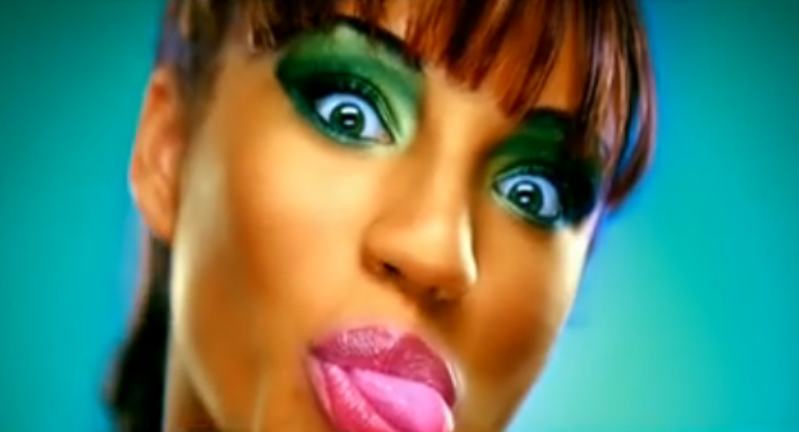 You show him, bubblegum-tongue lady.
You show him, bubblegum-tongue lady.